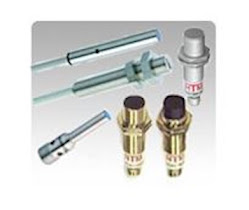The Evolution of Inductive Proximity Sensors in Modern Industry
Inductive proximity sensors have come a long way since their introduction in the mid-20th century. Designed to detect metallic objects without physical contact, these sensors have become essential in industrial automation, robotics, manufacturing, and quality control. Over time, advancements in electronics and sensor technology have significantly improved the functionality, precision, and versatility of inductive proximity sensors, allowing them to meet the growing demands of modern industry.
Origins and Basic Principle
The first inductive proximity sensors were relatively
simple devices, relying on basic electromagnetic principles. They worked by
generating an electromagnetic field through an oscillator. When a metal object
entered this field, eddy currents were induced in the object, causing a change
in the oscillator’s amplitude. This change was then detected and translated
into an output signal.
Early models were often large, limited in range, and lacked
the durability needed for harsh industrial environments. However, their
non-contact detection method made them invaluable in applications where
physical switches would wear out quickly or be prone to contamination.
Advancements in Technology
With the development of microelectronics and digital signal
processing, inductive proximity sensors began to evolve rapidly.
Miniaturization allowed for more compact sensors without sacrificing
performance. Enhanced materials and better sealing techniques made sensors more
resistant to dust, water, and chemicals, opening up new applications in food
processing, automotive assembly, and heavy manufacturing.
Modern sensors now feature improved sensing distances,
higher accuracy, and faster response times. Some are capable of detecting
different types of metals and adjusting sensitivity accordingly. Additionally,
many inductive sensors are now equipped with diagnostic features that can alert
maintenance teams of potential issues before they lead to downtime.
Integration with Industry 4.0
As industries shift toward smart manufacturing, inductive
proximity sensors have adapted to meet the needs of connected systems. Today’s
sensors often include communication capabilities such as IO-Link, enabling
real-time data exchange between the sensor and centralized control systems.
This integration supports predictive maintenance, remote monitoring, and better
process optimization.
Moreover, inductive proximity sensors now contribute to
energy efficiency by reducing unnecessary machine movements and helping detect
misalignments or malfunctions early in the process. This aligns perfectly with
Industry 4.0 goals of smarter, leaner, and more responsive production lines.
Applications Across Industries
The evolution of inductive proximity sensors has broadened
their use across a wide range of industries. In automotive manufacturing, they
ensure correct positioning of components on assembly lines. In packaging, they
detect the presence of metallic parts. In robotics, they serve as limit
switches or help guide automated systems with precise positioning.
Their ability to operate reliably in extreme temperatures,
high-vibration environments, and areas with high electromagnetic interference
makes them indispensable in sectors like aerospace, mining, and heavy
equipment.
Conclusion
The evolution of inductive proximity sensors reflects the broader trends in industrial innovation:
greater precision, enhanced connectivity, and increased resilience. As
industries continue to push for automation and smart technologies, inductive
proximity sensors will remain a foundational element in achieving efficiency,
reliability, and control. With ongoing research and development, the next
generation of these sensors promises even more capabilities, ensuring they keep
pace with the demands of modern industry.




Comments
Post a Comment